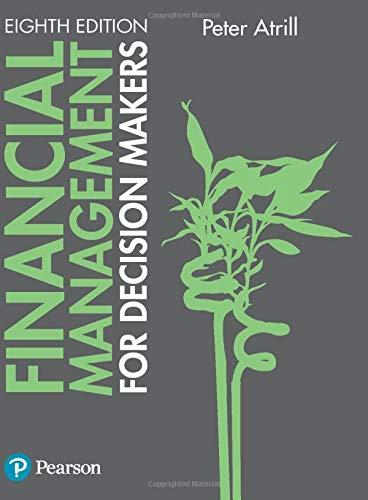Answered step by step
Verified Expert Solution
Question
1 Approved Answer
What advantages do the mutual funds offer compared to the company stock?A Job at East Coast Yachts You recently graduated from college and your job
What advantages do the mutual funds offer compared to the company stock?A Job at East Coast Yachts
You recently graduated from college and your job search led you to East Coast Yachts. Because you felt the company's business was
seaworthy, you accepted a job offer. The first day on the job, while you are finishing your employment paperwork, Dan Ervin, who works in
Finance, stops by to inform you about the company's plan.
A k plan is a retirement plan offered by many companies. Such plans are taxdeferred savings vehicles, meaning that any deposits you
make into the plan are deducted from your current pretax income, so no current taxes are paid on the money. For example, assume your
salary will be $ per year. If you contribute $ to the plan, you will pay taxes on only $ in income. There are also no
taxes paid on any capital gains or income while you are invested in the plan, but you do pay taxes when you withdraw money at retirement.
As is fairly common, the company also has a percent match. This means that the company will match your contribution up to percent of
your salary, but you must contribute the amount that you want matched, up to the maximum.
The k plan has several options for investments, most of which are mutual funds. A mutual fund is a portfolio of assets. When you
purchase shares in a mutual fund, you are actually purchasing partial ownership of the fund's assets. The return of the fund is the weighted
average of the return of the assets owned by the fund, minus any expenses. The largest expense is typically the management fee, paid to the
fund manager. The management fee is compensation for the manager, who makes all of the investment decisions for the fund
East Coast Yachts uses Bledsoe Financial Services as its k plan administrator. Here are the investment options offered for employees:
Company Stock One option in the k plan is stock in East Coast Yachts. The company is currently privately held. However, when you
interviewed with the owner, Larissa Warren, she informed you the company was expected to go public in the next three to four years.
Until then, a company stock price is set each year by the board of directors.
Bledsoe S&P Index Fund This mu
Of the five mutual funds listed, rank them from high to low solely in terms of risk.
a Which fund is highest and why?
b Which fund is second highest and why?
c Subtract the return of the second highest fund from the highest fund. What does
this difference in return represent?
Suppose you decide to invest $ of gross income ie pretax in the Bledsoe S&P
Index Fund and that the fund has an annual return. Ignore any other taxes,
fees, issues, employer match, etc. not mentioned below.
a Assuming annual compounding, how much money will you have in ten years?
i Calculate the dollar amount assuming the initial investment is made with
pretax dollars.
Also, calculate the aftertax amount assume a tax rate on both
principal and capital gains in year ten.
ii Calculate the dollar amount assuming the initial investment is made with
aftertax dollars assume a tax rate and no taxes are deducted in year
ten.
Suppose you invest in the Bledsoe S&P Index Fund for ten years and earn a Holding
Period Return HPR of
a What is your annual arithmetic return?
b What is your annual geometric return?
Calculate the Sharpe ratio for Bledsoe's S&P Index, SmallCap, LargeCompany
Stock, and Bond funds both net of expenses and ignoring expenses Assume a riskfree
rate of
a Which fund has the highest Sharpe ratio ignoring expenses
b Which fund has the highest Sharpe ratio net of expenses
i What is the interpretation of this fund's ratio?
Assume the expected return for Bledsoe's LargeCompany Stock Fund is with
standard deviation of and for the Bond Fund with standard deviation of
You decide to allocate of your investment to the stock fund and to the
bond fund. Ignore expenses.
a What is your portfolio expected return?
b What is your portfolio standard deviation?
i Assuming correlation of
ii Assuming correlation of
iii. Assuming correlation of
Calculate the Sharpe ratios for i ii and iii. ignore expenses and
assume a riskfree rate of Which portfolio was the highest?
If you were this new employee, what portfolio allocation would you choose and why?

Step by Step Solution
There are 3 Steps involved in it
Step: 1

Get Instant Access to Expert-Tailored Solutions
See step-by-step solutions with expert insights and AI powered tools for academic success
Step: 2

Step: 3

Ace Your Homework with AI
Get the answers you need in no time with our AI-driven, step-by-step assistance
Get Started


